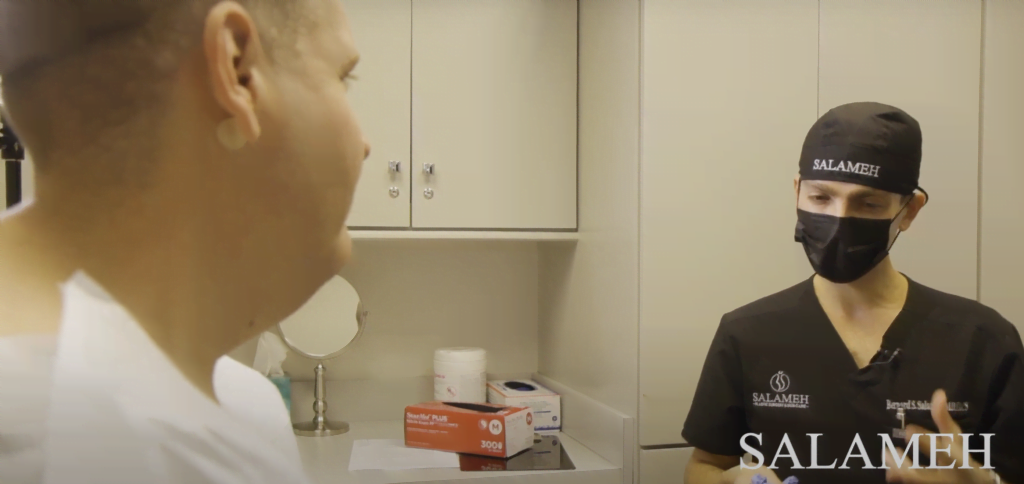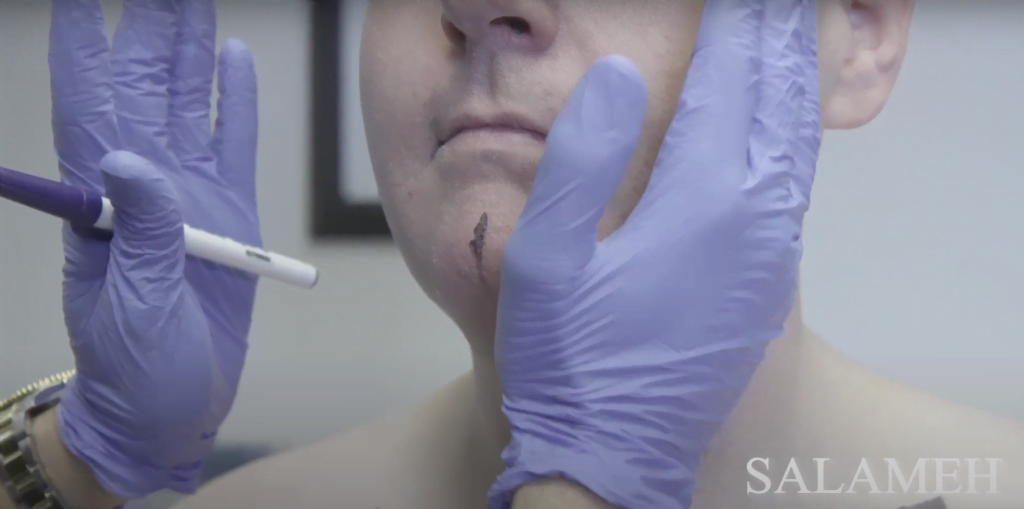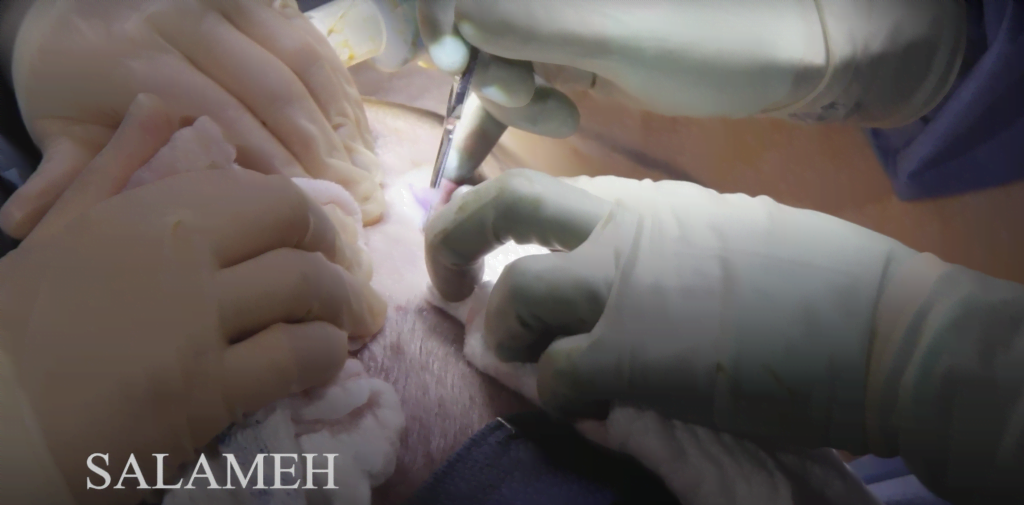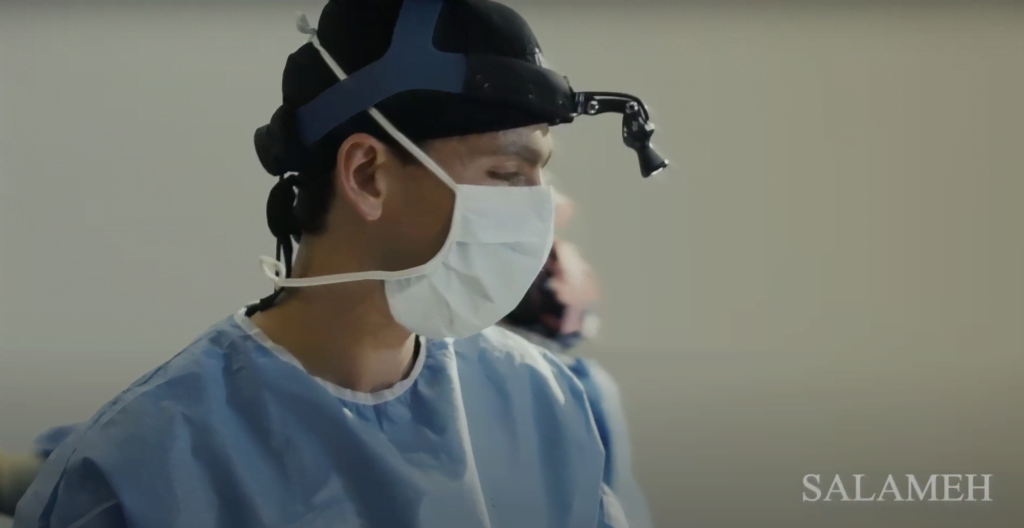Mini Facelift : A Safe, Quick, & Effective Beauty Solution
As we age, it’s normal for our skin to become less supple and for fine lines, wrinkles, and sagging to become apparent. Many people opt for cosmetic or plastic surgery to help counter some of the visible signs of aging. One option that’s grown in popularity for both men and women in recent times is the mini facelift.
The American Society of Plastic Surgeons has noted a steady rise in demand for minimally-invasive cosmetic procedures, such as facelifts, over the past few years. Additionally, the number of minimally invasive facelifts performed in the US rose by 5% between 2019 and 2020.
So, what is a mini facelift?

A mini facelift, also known as a “short scar facelift,” is a cosmetic surgery designed to target mild to moderate signs of aging on the face and neck. Unlike a traditional full facelift surgery, which includes extensive incisions and lifting of the lower layers of tissue, a mini facelift is less invasive.
There are several reasons why someone may consider getting this procedure. For some, it may be just to address signs of aging that are starting to appear, such as wrinkles, fine lines, or sagging skin. For others, it may be to restore a more youthful and refreshed appearance, which can have a positive impact on their self-confidence and overall well-being.
In the following sections of this post, we’ll take a closer look at how a mini facelift differs from a traditional facelift, what to expect during the procedure, and what the recovery process entails.
We’ll also discuss the expected before and after results and who may be a good candidate for the procedure.
Overview of the key differences between a mini facelift and the traditional facelift
While a mini facelift and a traditional facelift facial plastic surgery are both excellent options to address signs of aging on the face, neck, and jawline, there are some key differences between the two. Here’s an overview of how a mini facelift differs from a traditional facelift:
Incisions
One of the most significant differences between a mini facelift and a traditional facelift is the size and location of the incisions. In a traditional facelift, the incisions are typically longer and extend behind the ear and into the hairline. In contrast, a mini facelift involves smaller incisions in front of and behind the ear.
Scope of the Procedure
Another key difference is the scope of the procedure. A mini facelift is better suited for patients with mild to moderate signs of aging in the lower face and neck. In contrast, a traditional facelift may be more appropriate for patients with more extensive signs of aging throughout the face and neck.
Anesthesia Options
Most mini-facelift patients are given local anesthesia with sedation, while a traditional facelift is usually performed under general anesthesia.
Recovery Time
Because a mini facelift is less invasive, the recovery time is generally shorter than that of a traditional facelift. Most patients can return to work and other normal activities within a few weeks, while the recovery period for a conventional facelift can take up to several weeks.
Advantages of a mini facelift:
For some, a traditional facelift may be the best solution; however, a mini facelift has its own set of benefits that make it appealing.
Its less-invasive nature leads to less scarring, fewer complications, and a quicker recovery time for those who want to return to their routine quickly.
It is also an excellent choice for those seeking a subtle, natural-looking improvement since it focuses on the lower part of the face and neck, restoring a youthful, fresh look without significantly changing the facial structure.
Ultimately, both mini and traditional facelifts effectively address aging signs, but which is better depends on the individual.
Who are good candidates?

While this procedure can significantly improve the appearance of the face and neck, it’s essential to determine if you are a good candidate before deciding to undergo surgery.
Here are some factors to consider when deciding if this cosmetic procedure is right for you:
- Skin elasticity: you’ll likely have moderate looseness in your face and neck area. It’s well-suited for dealing with minor to moderate signs of aging, but if you have more advanced sagging or excess skin, you may need to opt for something more involved.
- Age: Generally, ideal candidates range from their 40s to 60s; the optimal age for a facelift comes from individual variables such as genetics and life habits.
- Health: it’s vital that you’re in good health and don’t have any underlying medical issues that could increase the chances of complications.
- Realistic expectations: An ideal candidate has sensible expectations for the procedure’s results. Although it can bring about meaningful improvements, it will not work miracles.
Mini Facelift Cost
When considering how much is a mini facelift in the US, there are several elements to take into account, including where the practice is located, the expertise and qualifications of the surgeon, and the individualized treatment plan.
Generally, it runs from $3,000 to $8,000, but certain practices may charge more depending on the details of the case. It is essential to consider more than just price when deciding on a plastic surgeon, as experience, credentials, and quality of care are all key factors.
Patients should talk to their plastic surgeons to learn more about the costs and payment options.
What to expect during the procedure?

If you’re considering this procedure, it’s essential to understand what to expect during the procedure and the potential risks and side effects.
Consultation
Before your facelift procedure, you’ll meet with your plastic surgeon to discuss your procedure goals and determine if you are a good candidate. Your surgeon will review your medical history, perform a physical examination, and discuss the details of the procedure, including the risks and benefits.
Anesthesia
During the procedure, you’ll receive local anesthesia with sedation to ensure you are comfortable and relaxed throughout the surgery.
Incisions
Next, your surgeon will make small incisions in front of and behind the ear. These incisions are carefully placed to minimize scarring and ensure that the results are natural-looking.
Tissue manipulation
Using specialized instruments, your surgeon will lift and tighten the underlying tissue in the lower face and neck. This helps to restore a more youthful and rejuvenated appearance.
Closing incisions
Once the tissue has been lifted and tightened, the incisions are carefully closed with sutures. Your surgeon will use dissolvable sutures whenever possible to reduce the need for follow-up appointments to have them removed.
Potential risks and side effects include:
Swelling and bruising
It’s normal to experience some bruising and swelling after the surgery. This should subside within a few weeks.
Pain and discomfort
You may experience pain and discomfort after the procedure, but these can usually be managed with over-the-counter pain medication.
Infection
While rare, there is a risk of infection after any surgical procedure. Your surgeon will provide detailed instructions for caring for your incisions to minimize this risk.
Scarring
While the incisions of this surgery are smaller than those for a traditional facelift, there is still a risk of scarring. Your surgeon will place the incisions in inconspicuous areas to minimize visible scarring.
Overall, a mini facelift is a safe and effective procedure that can help to restore a more youthful and refreshed appearance to the lower face and neck. While there are some risks and potential side effects, these can be minimized with proper care and attention to the recovery process.
Recovery

After the procedure, the recovery period is necessary to allow your body to heal and adjust to the changes made during the procedure. Here’s a detailed overview of what to expect during the recovery period and some tips for promoting healing:
Timeline for recovery and returning to normal activities
The recovery time of the procedure is generally shorter than that of a traditional facelift, typically ranging from 7-14 days. During this time, you’ll need to rest and avoid strenuous activities to ensure that your incisions heal properly. You’ll also need to avoid smoking and alcohol, which can delay healing.
Tips for minimizing discomfort and promoting healing
To promote healing and minimize discomfort, here are some tips to keep in mind:
- Elevate your head: To reduce swelling and soreness, it’s significant to put your head up after the operation. You can do this by sleeping with your head lifted with pillows or by sitting in a recliner chair.
- Take your medication as suggested: Your doctor will give you pain medication to ease any uneasiness after the surgery. It’s essential to take the medication just as prescribed to evade unnecessary pain or problems.
- Apply cold compresses: Applying cold compresses to the treatment area is beneficial in diminishing swelling and aiding recovery. Put the cold compress on for 20 minutes before taking a break.
- Follow your surgeon’s orders for wound care: Proper wound care is indispensable to help heal and decrease the risk of infection. Follow your surgeon’s orders for wound care, including cleaning the incisions and changing coverings as required.
- Stay away from strenuous activities: For several weeks after your procedure, it is best to steer clear of any activities that could put too much pressure on the incisions. That includes lifting heavy items, physical exertion, and the like.
- Consume a nutritious diet: Eating a balanced diet with lots of fruits and vegetables, and lean proteins can help with the healing process and reduce the likelihood of any potential issues. By nourishing your body with the nutrients it needs, it can recover quickly and effectively.
Contact your surgeon for guidance and advice if you have any concerns or questions during recovery.
Mini facelift Before and After results:
- Reduced sagging: As we age, the skin on our face and neck can start to sag and lose its elasticity. This procedure can help reduce this sagging by tightening the underlying muscles and tissues.
- Smoother skin: It can also help smooth out wrinkles and fine lines, giving the skin a more youthful appearance.
- Improved jawline: One of the key areas that the procedure can target is the jawline. This procedure can help improve the definition of the jawline and reduce the appearance of jowls.
- More defined neck: It can also help address the appearance of a “turkey neck” by tightening the skin and muscles in the neck area.
How long can the results last?
The results of a mini facelift can last anywhere from three to five years, depending on various factors such as age, genetics, and lifestyle habits.
It’s important to note that the longevity of the results will also depend on the aftercare measures taken by the patient.
Mini facelift with the best board-certified plastic surgeon in Indiana & Kentucky

Salameh Plastic Surgery Center offers patients the latest minimally invasive facelift techniques with the mini facelift.
Our team of experienced double-board plastic surgeons uses the latest technology and techniques to deliver personalized treatment plans that address each patient’s unique concerns.
Contact Salameh Plastic Surgery Center today to learn more about how a mini facelift can help you achieve your aesthetic goals.
Takeaway
It’s essential to consult with a qualified and experienced plastic surgeon to determine if it is the right option for you. The surgeon can evaluate your concerns and aesthetic goals and recommend the most appropriate treatment plan. They can also explain the procedure in detail and give you a realistic idea of the potential outcomes.
In summary, a mini facelift can be an excellent option for patients who want a more youthful and refreshed appearance without undergoing a more extensive procedure. By consulting with a qualified plastic surgeon, you can determine if a mini facelift is suitable for you and take the first step toward achieving your aesthetic goals.

